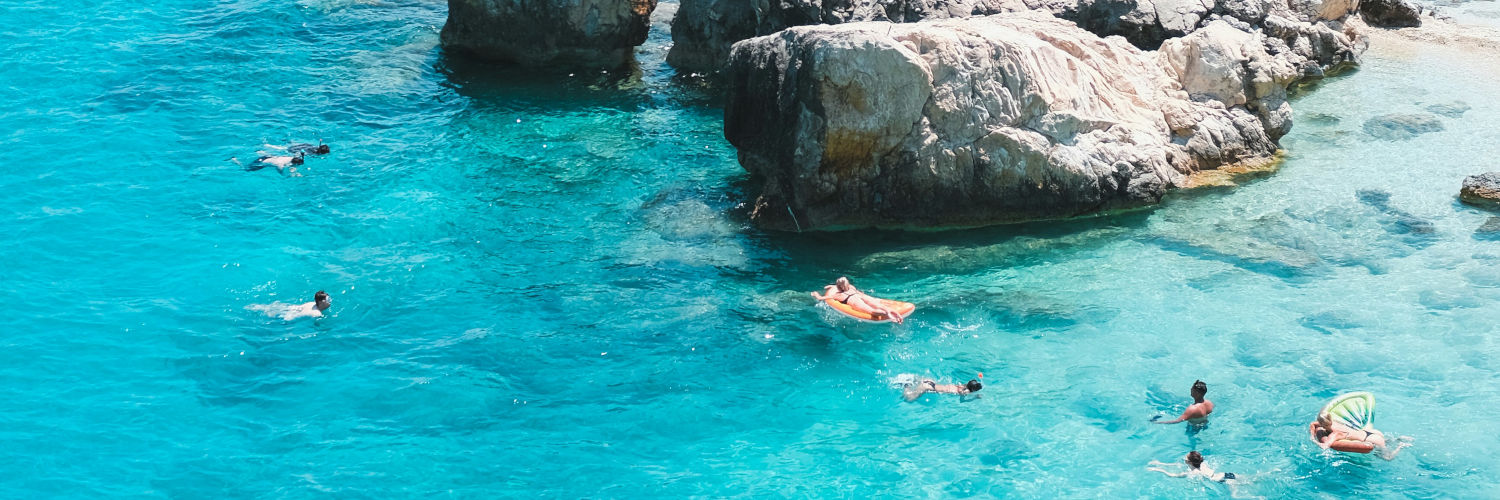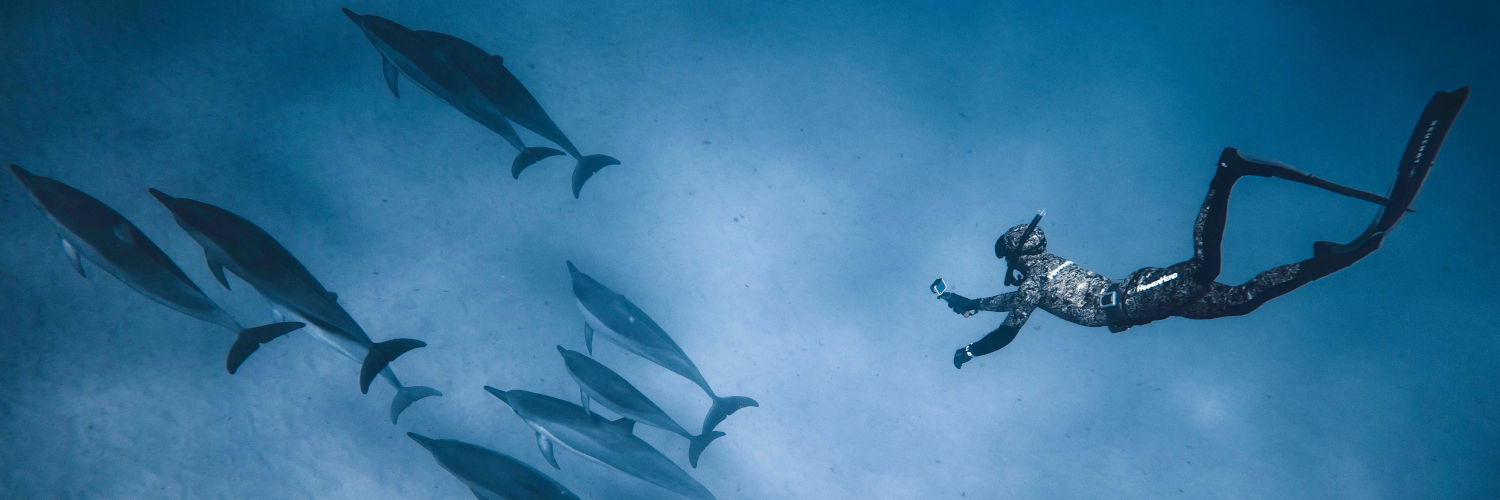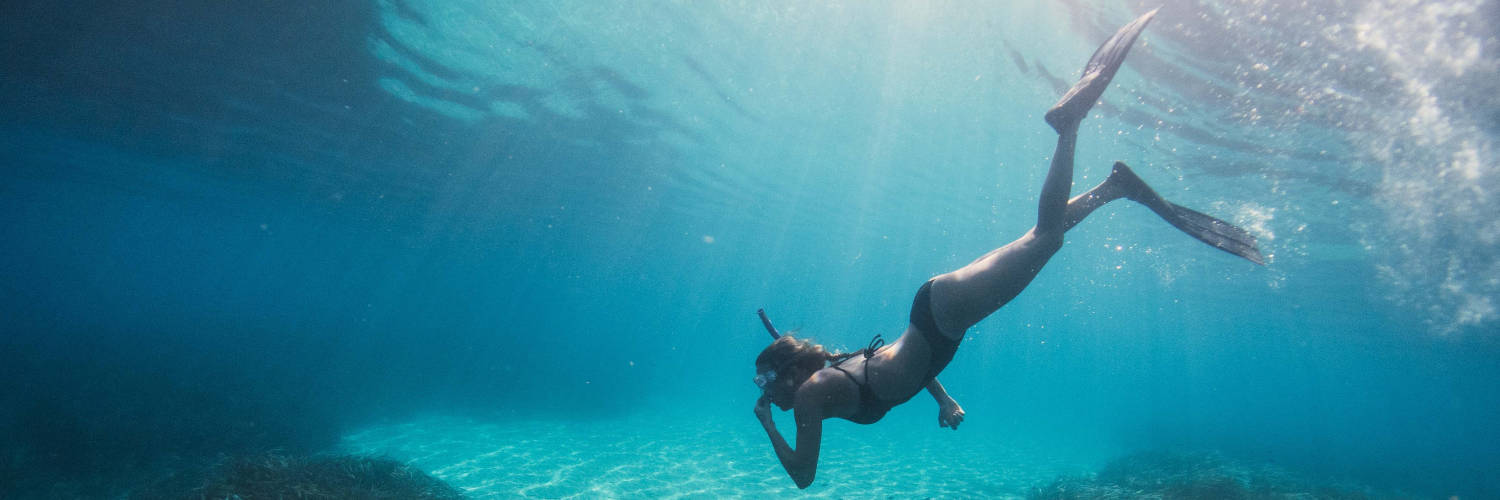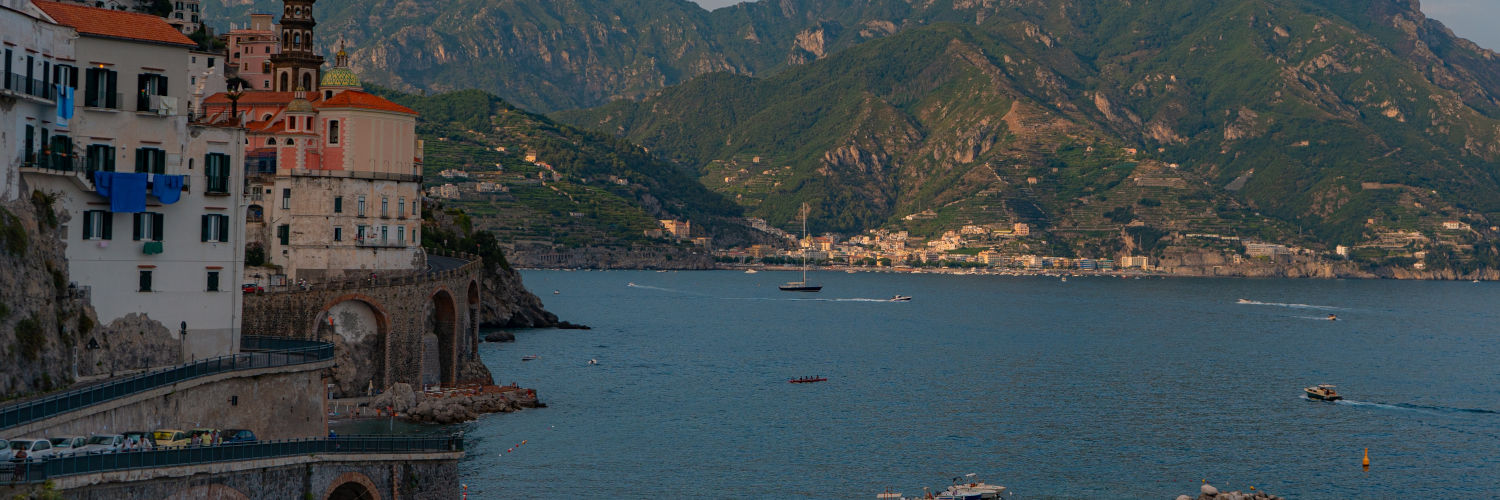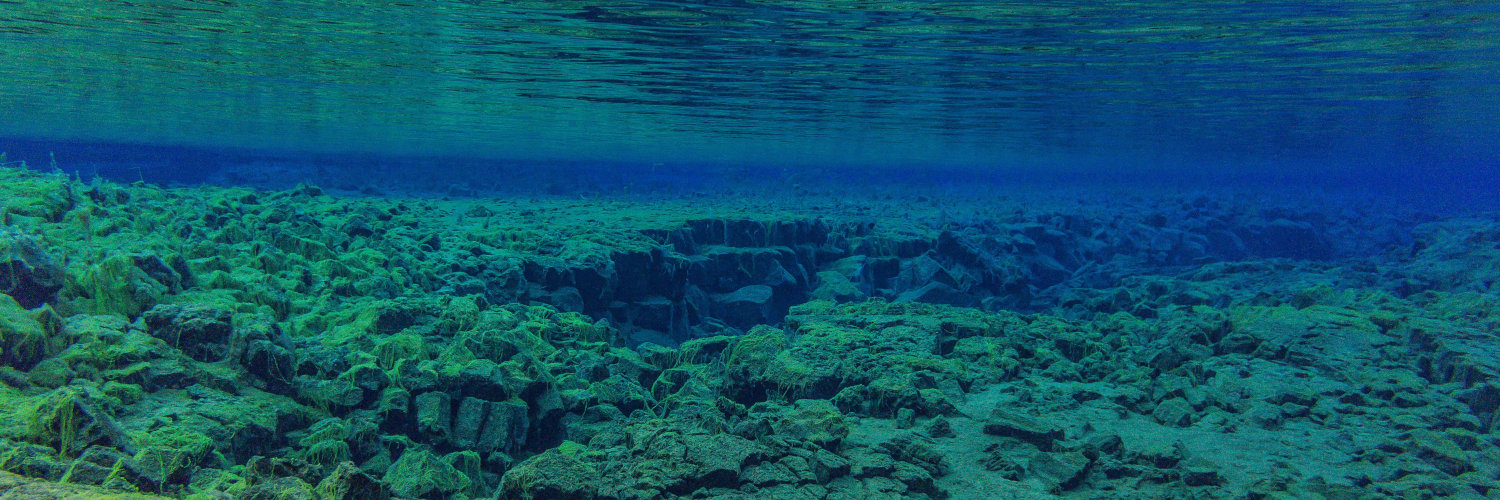Snorkeling in the Mediterranean Sea: Top Destinations and Tips for an Unforgettable Adventure
Snorkeling in the Mediterranean Sea offers a remarkable opportunity for enthusiasts to explore a unique underwater world. Known for its crystal-clear waters and a pleasant climate, the Mediterranean provides a variety of environments suitable for underwater adventures. From the rocky shores and seagrass beds to sandbanks and hidden caves, the tranquility and diversity of the sea appeal to snorkelers of all levels.
The sea is home to numerous snorkeling spots distributed across several countries, including the Balearic Islands, Corsica, Zakynthos, Sardinia, Malta, Cyprus, Capri, the Medes Islands, Sicily, and Albania. Each location showcases a tapestry of marine life, flourishing in areas devoid of coral reefs yet abundant with colorful fish and other sea creatures.
The best time for snorkeling in the Mediterranean is typically during the warmer months when the sea conditions are calm and inviting. While the Mediterranean lacks the coral reefs found in other popular snorkeling destinations, its biodiversity includes around 7% of the world’s marine fish species, making it an exceptional place for snorkelers to discover the wonders of the sea.
Destinations for Snorkeling
The Mediterranean is a treasure trove of snorkeling destinations, boasting diverse marine life and a variety of unique undersea landscapes. From the clarity of its waters to the richness of its marine biodiversity, snorkelers are drawn to its islands and coasts for a glimpse of the underwater wonders.
Top Snorkeling Islands
Greece: Often heralded for clear waters and abundant marine life, islands like Zakynthos and Lefkas offer breathtaking snorkeling experiences.
Spain: The Balearic Islands provide a range of snorkeling spots with Mallorca known for its picturesque bays and coves. Medes Islands stand out for large schools of fish that frequent its shallows.
Italy: Sardinia and Sicily are famed for their white sand beaches and crystalline waters, while the Aegadian Islands including Favignana at Cala Rossa provide a dramatic underwater scene with rocky formations.
Malta and Cyprus: With unique bays and inlets teeming with endemic species, these islands offer a vibrant snorkeling experience.
Famous Snorkeling Spots
Maddalena Archipelago National Park and Cabrera Archipelago National Park present snorkelers with the opportunity to explore protected marine areas with rich ecosystems.
Costa Brava in Spain provides snorkelers with access to a rugged coastline dotted with secluded coves and the famous Cameo Island, which is celebrated for its underwater beauty.
Croatia’s Mljet National Park features tranquil waters and is known for its dense forests that stretch to the shores, creating a stunning backdrop for underwater exploration.
Calanques National Park near France offers intriguing cliff and cove snorkeling, with Palombaggia Beach standing out for its fine sand and clear water.
Marine Life of the Mediterranean
The Mediterranean Sea is renowned for its diverse ecosystem, characterized by a myriad of fish, plant species, and unique habitats that contribute to its rich marine biodiversity. Harmony between various life forms creates a vibrant underwater tableau for snorkelers to observe.
Fish and Other Sea Creatures
The fauna of the Mediterranean Sea includes over 500 species of fish. The common residents of this aquatic realm include:
- Seabream and Gilt-Head Bream: found in coastal waters
- Wrasse: colorful fish that often inhabit rocky crevices
- Dentex: a predator with a robust build
- Amberjack: known for their silver-blue body and quick swimming
- Moray Eels and Octopus: often spotted in underwater caves
- Cuttlefish and Barracuda
- Sargo and Salema: usually seen in schools
- Sea Turtles: endangered species that grace the waters with their presence
Not only fish, but also other creatures like Seahorses and Mediterranean Monk Seals add to the sea’s charm, though the latter are rarely sighted due to their vulnerable status.
Marine Flora
Posidonia meadows are a distinctive feature of the Mediterranean seabed. These underwater fields are formed by Posidonia oceanica, a type of seagrass that acts as a vital oxygen source and plays a key role in the ecosystem:
- Posidonia: supports marine life by providing habitat and food
- Yellow Gorgonians: fan-shaped colonies that create intricate living structures
Despite the absence of traditional tropical coral reefs, the marine flora creates a foundation for the Mediterranean’s underwater life.
Protected Marine Species
Several species in the Mediterranean are protected under various conservation measures, situated within Marine Reserves and Marine Protected Areas:
- Sea Turtles: initiatives aim to shield these creatures and their nesting sites
- The elusive Mediterranean Monk Seal: subject to habitat protection efforts
- Numerous fish species benefit from fishing restrictions in protected zones
These efforts are crucial in maintaining the balance of the Mediterranean’s marine biodiversity and ensuring the longevity of its unique underwater life.
Conservation Efforts
In addressing the challenges faced by the Mediterranean Sea, numerous conservation efforts focus on establishing marine reserves and parks, as well as fostering education and sustainable practices. These initiatives are crucial for preserving marine biodiversity and ensuring the health of marine ecosystems.
Marine Reserves and Parks
Marine Protected Areas (MPAs) have been instrumental in conserving the Mediterranean Sea’s marine biodiversity, encompassing an array of locations from the Cabrera Archipelago National Park in Spain to the serene waters of the Maddalena Archipelago National Park in Italy.
- Cabrera Archipelago National Park: A haven for marine life, demonstrating effective ecosystem conservation.
- Maddalena Archipelago National Park: Protects diverse underwater life and promotes sustainable tourism.
- Mljet National Park: In Croatia, this park serves as a sanctuary for endemic and endangered species.
- Calanques National Park: Along the French coast, protecting vital ecosystems and species.
These parks and reserves maintain delicate ecological balances, ensuring that unique habitats, such as the Posidonia oceanica seagrass meadows, continue to thrive and sustain the marine creatures that depend on them.
Education and Sustainable Practices
Education initiatives within the Mediterranean region aim to increase awareness about the importance of marine conservation. These include:
- Promoting awareness of the detrimental impact of plastic pollution.
- Encouraging best practices for environmental stewardship among local communities and visitors.
Sustainable practices are also a focal point, with measures taken to ensure that human activities such as snorkeling and tourism are conducted in ways that do not harm the marine environment. These practices involve strict guidelines to prevent overfishing, reduce waste and pollution, and manage human influence on sensitive underwater ecosystems.
Equipment and Safety
Before exploring the underwater marvels of the Mediterranean, snorkelers should prioritize two crucial factors: appropriate gear and adherence to safety protocols. These elements are fundamental for a satisfying and secure snorkeling experience.
Essential Gear for Snorkelers
A snorkeler’s kit typically comprises a mask, snorkel, and fins. For Mediterranean waters, a mask with a clear, one-window design offers broad visibility and is easier to equalize. The snorkel should have a comfortable mouthpiece and a purge valve for efficient clearing. Fins provide swimmers with better propulsion and maneuverability, making them a must for covering more area with less effort.
When selecting gear, snorkelers should consider:
- Fit: Ensure masks and fins fit snugly to prevent leaks and blisters.
- Quality: High-grade materials improve durability and performance.
- Visibility: Clear silicone and anti-fog treatments enhance view underwater.
Table of Snorkeling Gear Essentials
| Equipment | Function | Consideration |
|---|---|---|
| Mask | Provides clear vision underwater | Must fit well, anti-fog |
| Snorkel | Facilitates breathing on the surface | Comfortable mouthpiece, easy purge |
| Fins | Increases swimming efficiency and control | Correct size, comfortable straps |
Safety Guidelines and Best Practices
Snorkelers should always be conscious of their environment and personal limits. They must never snorkel alone and should stay within their swimming abilities. Observation of marine wildlife should be done at a respectful distance to avoid disturbing the ecosystem.
Key safety measures include:
- Buddy System: Always snorkel with a partner for mutual assistance.
- Awareness: Monitor local sea conditions and potential hazards.
- Marine Life: Avoid touching or feeding fish and other underwater organisms.
When departing from a boat, the presence of a dive flag is essential for alerting nearby vessels to the presence of snorkelers. Snorkelers must also be conscious of potential scuba divers in the area, ensuring they maintain a safe distance to avoid possible underwater collisions.
Safety Checklist
- Check weather and marine forecasts before departure.
- Snorkel with a partner at all times.
- Respect all forms of underwater life; do not touch or feed.
- Use a dive flag when snorkeling from a boat.
- Keep a safe distance from scuba divers and other marine traffic.
Adhering to these guidelines and equipping oneself with appropriate gear will ensure a delightful and safe snorkeling venture in the magnificent waters of the Mediterranean.
Snorkeling Techniques and Skills
This section equips the reader with essential techniques for both novices and experienced snorkelers, providing a foundation for safe and enjoyable underwater exploration.
Basic Snorkeling Skills
One must master certain basic skills before venturing into the water for snorkeling. Swimming is fundamental—a snorkeler should be comfortable in water and able to maintain buoyancy without effort. When starting, they should practice:
- Breath Control: Learning to breathe solely through the snorkel tube.
- Mask Clearing: Clearing water from the snorkel mask without panic is critical.
- Fins Use: Efficiently using fins for propulsion, which includes flutter kicks (straight leg kicking) and frog kicks (bending the knees).
Advanced Snorkeling and Free Diving
For those looking to delve deeper into snorkeling and free diving, more sophisticated skills are needed:
- Duck Diving: This technique allows snorkelers to dive beneath the surface smoothly. It involves bending at the waist, with arms stretched forward, and using fins to glide down.
- Equalizing: Essential in free diving, this is the process of equalizing pressure in one’s ears as they descend. The most common method is the Valsalva maneuver, which entails pinching the nose and gently blowing to balance ear pressure.
- Breath-Hold Techniques: Critical for free diving, proper breath-hold techniques involve diaphragm breathing and relaxation to extend underwater time.
Additional Water Activities
The Mediterranean is not only a premier location for snorkeling but also offers a vast array of other water-related activities, many taking advantage of the region’s crystal-clear waters and unique marine features.
Diving and Exploration
Scuba Diving: Adventurers can explore underwater wonders beyond the surface with scuba diving excursions. The Mediterranean’s seabed is rich with diverse environments, from the Blue Hole in Gozo, Malta—a submerged vertical cave that draws divers worldwide—to the Ponton De La Bordelaise in France, an artificial reef teeming with marine life.
- Underwater Statues: In several locations, divers can discover sculptures placed beneath the waves, which have turned into vibrant marine habitats.
- Fresh Springs: Divers can also seek out fresh water springs that emerge directly into the sea, creating unique underwater landscapes.
Surface Water Sports
Kayaking: The calm and clear Mediterranean waters are ideal for kayaking, enabling visitors to leisurely navigate along the coastline and explore hidden coves and secluded beaches.
- Locations:
- Malta’s coastline
- Greek Islands
- Dalmatian Coast of Croatia
Connection to nature and the environment is emphasized through these activities, allowing for immersive experiences in the Mediterranean’s aquatic realm.
Travel Tips and Preparation
When planning a snorkeling trip in the Mediterranean, travelers should pay close attention to the timing of their visit and become familiar with local customs to ensure a respectful and enjoyable experience.
Best Time to Visit for Snorkeling
Mediterranean Climate:
- Peak Snorkeling Season: The best times for snorkeling in the Mediterranean Sea span from late May through September when the water temperatures are warm and the sea is calm.
- Off-Peak Times: Although some regions may offer year-round snorkeling, off-season months might come with choppier waters and fewer open facilities.
| Month | Snorkeling Conditions | Tourist Crowds |
|---|---|---|
| May - June | Warming waters, optimal visibility | Moderate |
| July - Aug | Warm waters, highest visibility | High |
| Sept - Oct | Pleasant temperatures, less crowds | Declining |
Local Customs and Etiquette
Snorkeling Spots and Behavior:
- Respect Anchorage Areas: Divers should be mindful of areas with heavy boat traffic and anchorage zones, especially near bustling ports like Palma De Mallorca and Dubrovnik.
Cultural Sensitivity:
- Public Decorum: In European cities such as Chora and Sète, public behavior is scrutinized; visitors should dress modestly onshore and respect local norms to maintain a comfortable atmosphere for all.
